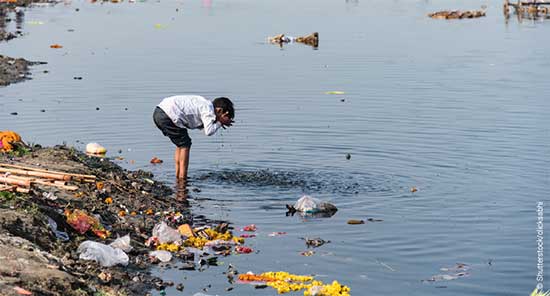
Although natural processes also generate water pollutants, human activities related to population growth, urbanization, agricultural expansion, transportation, and human and industrial waste discharges are typically the main sources of water pollution (UNEP 2016e). They include pathogens, nutrients, heavy metals and organic chemicals (Annex 9-1) from point sources (domestic, industrial or sewage pipeline discharges; septic tank leakage) and/or catchment non-point sources (land surface run-off from extensive diffuse agricultural use and urban areas following rainfall and snowmelt events).
Water quality in many Latin American, African, Asian and Pacific rivers has generally decreased since the 1990s, although the majority are still in relatively good condition (UNEP 2016e). Water quality in many European rivers has improved since adoption of the EU Water Framework Directive in 2000. About half of United States waters do not meet standards protective of aquatic life, with more than 40 per cent not meeting recreational-use standards (UNEP 2016a). The water quality of many lakes and reservoirs is particularly endangered worldwide because of their long water residence times and tendency to accumulate pollutants (International Lake Environment Committee Foundation [ILEC] and UNEP 2016).
Groundwater pollution sources include non-point agricultural and urban run-off, on-site wastewater treatment, oil and gas extraction and fracking activities, mining, and industrial sources (Foster et al. 2016). Natural contamination occurs in some cases (e.g. sodium-chloride salinity, arsenic, fluoride, radioactivity in fossil groundwater aquifers). Human health impacts from untreated groundwater are of particular concern (Morris et al. 2003; UNEP 2016e).